- Home
- Walter Isaacson
Steve Jobs Page 16
Steve Jobs Read online
Page 16
But even though Jobs’s style could be demoralizing, it could also be oddly inspiring. It infused Apple employees with an abiding passion to create groundbreaking products and a belief that they could accomplish what seemed impossible. They had T-shirts made that read “90 hours a week and loving it!” Out of a fear of Jobs mixed with an incredibly strong urge to impress him, they exceeded their own expectations. “I’ve learned over the years that when you have really good people you don’t have to baby them,” Jobs later explained. “By expecting them to do great things, you can get them to do great things. The original Mac team taught me that A-plus players like to work together, and they don’t like it if you tolerate B work. Ask any member of that Mac team. They will tell you it was worth the pain.”
Most of them agree. “He would shout at a meeting, ‘You asshole, you never do anything right,’” Debi Coleman recalled. “It was like an hourly occurrence. Yet I consider myself the absolute luckiest person in the world to have worked with him.”
CHAPTER TWELVE
THE DESIGN
Real Artists Simplify
A Bauhaus Aesthetic
Unlike most kids who grew up in Eichler homes, Jobs knew what they were and why they were so wonderful. He liked the notion of simple and clean modernism produced for the masses. He also loved listening to his father describe the styling intricacies of various cars. So from the beginning at Apple, he believed that great industrial design—a colorfully simple logo, a sleek case for the Apple II—would set the company apart and make its products distinctive.
The company’s first office, after it moved out of his family garage, was in a small building it shared with a Sony sales office. Sony was famous for its signature style and memorable product designs, so Jobs would drop by to study the marketing material. “He would come in looking scruffy and fondle the product brochures and point out design features,” said Dan’l Lewin, who worked there. “Every now and then, he would ask, ‘Can I take this brochure?’” By 1980, he had hired Lewin.
His fondness for the dark, industrial look of Sony receded around June 1981, when he began attending the annual International Design Conference in Aspen. The meeting that year focused on Italian style, and it featured the architect-designer Mario Bellini, the filmmaker Bernardo Bertolucci, the car maker Sergio Pininfarina, and the Fiat heiress and politician Susanna Agnelli. “I had come to revere the Italian designers, just like the kid in Breaking Away reveres the Italian bikers,” recalled Jobs, “so it was an amazing inspiration.”
In Aspen he was exposed to the spare and functional design philosophy of the Bauhaus movement, which was enshrined by Herbert Bayer in the buildings, living suites, sans serif font typography, and furniture on the Aspen Institute campus. Like his mentors Walter Gropius and Ludwig Mies van der Rohe, Bayer believed that there should be no distinction between fine art and applied industrial design. The modernist International Style championed by the Bauhaus taught that design should be simple, yet have an expressive spirit. It emphasized rationality and functionality by employing clean lines and forms. Among the maxims preached by Mies and Gropius were “God is in the details” and “Less is more.” As with Eichler homes, the artistic sensibility was combined with the capability for mass production.
Jobs publicly discussed his embrace of the Bauhaus style in a talk he gave at the 1983 design conference, the theme of which was “The Future Isn’t What It Used to Be.” He predicted the passing of the Sony style in favor of Bauhaus simplicity. “The current wave of industrial design is Sony’s high-tech look, which is gunmetal gray, maybe paint it black, do weird stuff to it,” he said. “It’s easy to do that. But it’s not great.” He proposed an alternative, born of the Bauhaus, that was more true to the function and nature of the products. “What we’re going to do is make the products high-tech, and we’re going to package them cleanly so that you know they’re high-tech. We will fit them in a small package, and then we can make them beautiful and white, just like Braun does with its electronics.”
He repeatedly emphasized that Apple’s products would be clean and simple. “We will make them bright and pure and honest about being high-tech, rather than a heavy industrial look of black, black, black, black, like Sony,” he preached. “So that’s our approach. Very simple, and we’re really shooting for Museum of Modern Art quality. The way we’re running the company, the product design, the advertising, it all comes down to this: Let’s make it simple. Really simple.” Apple’s design mantra would remain the one featured on its first brochure: “Simplicity is the ultimate sophistication.”
Jobs felt that design simplicity should be linked to making products easy to use. Those goals do not always go together. Sometimes a design can be so sleek and simple that a user finds it intimidating or unfriendly to navigate. “The main thing in our design is that we have to make things intuitively obvious,” Jobs told the crowd of design mavens. For example, he extolled the desktop metaphor he was creating for the Macintosh. “People know how to deal with a desktop intuitively. If you walk into an office, there are papers on the desk. The one on the top is the most important. People know how to switch priority. Part of the reason we model our computers on metaphors like the desktop is that we can leverage this experience people already have.”
Speaking at the same time as Jobs that Wednesday afternoon, but in a smaller seminar room, was Maya Lin, twenty-three, who had been catapulted into fame the previous November when her Vietnam Veterans Memorial was dedicated in Washington, D.C. They struck up a close friendship, and Jobs invited her to visit Apple. “I came to work with Steve for a week,” Lin recalled. “I asked him, ‘Why do computers look like clunky TV sets? Why don’t you make something thin? Why not a flat laptop?’” Jobs replied that this was indeed his goal, as soon as the technology was ready.
At that time there was not much exciting happening in the realm of industrial design, Jobs felt. He had a Richard Sapper lamp, which he admired, and he also liked the furniture of Charles and Ray Eames and the Braun products of Dieter Rams. But there were no towering figures energizing the world of industrial design the way that Raymond Loewy and Herbert Bayer had done. “There really wasn’t much going on in industrial design, particularly in Silicon Valley, and Steve was very eager to change that,” said Lin. “His design sensibility is sleek but not slick, and it’s playful. He embraced minimalism, which came from his Zen devotion to simplicity, but he avoided allowing that to make his products cold. They stayed fun. He’s passionate and super-serious about design, but at the same time there’s a sense of play.”
As Jobs’s design sensibilities evolved, he became particularly attracted to the Japanese style and began hanging out with its stars, such as Issey Miyake and I. M. Pei. His Buddhist training was a big influence. “I have always found Buddhism, Japanese Zen Buddhism in particular, to be aesthetically sublime,” he said. “The most sublime thing I’ve ever seen are the gardens around Kyoto. I’m deeply moved by what that culture has produced, and it’s directly from Zen Buddhism.”
Like a Porsche
Jef Raskin’s vision for the Macintosh was that it would be like a boxy carry-on suitcase, which would be closed by flipping up the keyboard over the front screen. When Jobs took over the project, he decided to sacrifice portability for a distinctive design that wouldn’t take up much space on a desk. He plopped down a phone book and declared, to the horror of the engineers, that it shouldn’t have a footprint larger than that. So his design team of Jerry Manock and Terry Oyama began working on ideas that had the screen above the computer box, with a keyboard that was detachable.
One day in March 1981, Andy Hertzfeld came back to the office from dinner to find Jobs hovering over their one Mac prototype in intense discussion with the creative services director, James Ferris. “We need it to have a classic look that won’t go out of style, like the Volkswagen Beetle,” Jobs said. From his father he had developed an appreciation for the contours of classic cars.
“No, that’s not right,” Ferr
is replied. “The lines should be voluptuous, like a Ferrari.”
“Not a Ferrari, that’s not right either,” Jobs countered. “It should be more like a Porsche!” Jobs owned a Porsche 928 at the time. When Bill Atkinson was over one weekend, Jobs brought him outside to admire the car. “Great art stretches the taste, it doesn’t follow tastes,” he told Atkinson. He also admired the design of the Mercedes. “Over the years, they’ve made the lines softer but the details starker,” he said one day as he walked around the parking lot. “That’s what we have to do with the Macintosh.”
Oyama drafted a preliminary design and had a plaster model made. The Mac team gathered around for the unveiling and expressed their thoughts. Hertzfeld called it “cute.” Others also seemed satisfied. Then Jobs let loose a blistering burst of criticism. “It’s way too boxy, it’s got to be more curvaceous. The radius of the first chamfer needs to be bigger, and I don’t like the size of the bevel.” With his new fluency in industrial design lingo, Jobs was referring to the angular or curved edge connecting the sides of the computer. But then he gave a resounding compliment. “It’s a start,” he said.
Every month or so, Manock and Oyama would present a new iteration based on Jobs’s previous criticisms. The latest plaster model would be dramatically unveiled, and all the previous attempts would be lined up next to it. That not only helped them gauge the design’s evolution, but it prevented Jobs from insisting that one of his suggestions had been ignored. “By the fourth model, I could barely distinguish it from the third one,” said Hertzfeld, “but Steve was always critical and decisive, saying he loved or hated a detail that I could barely perceive.”
One weekend Jobs went to Macy’s in Palo Alto and again spent time studying appliances, especially the Cuisinart. He came bounding into the Mac office that Monday, asked the design team to go buy one, and made a raft of new suggestions based on its lines, curves, and bevels.
Jobs kept insisting that the machine should look friendly. As a result, it evolved to resemble a human face. With the disk drive built in below the screen, the unit was taller and narrower than most computers, suggesting a head. The recess near the base evoked a gentle chin, and Jobs narrowed the strip of plastic at the top so that it avoided the Neanderthal forehead that made the Lisa subtly unattractive. The patent for the design of the Apple case was issued in the name of Steve Jobs as well as Manock and Oyama. “Even though Steve didn’t draw any of the lines, his ideas and inspiration made the design what it is,” Oyama later said. “To be honest, we didn’t know what it meant for a computer to be ‘friendly’ until Steve told us.”
Jobs obsessed with equal intensity about the look of what would appear on the screen. One day Bill Atkinson burst into Texaco Towers all excited. He had just come up with a brilliant algorithm that could draw circles and ovals onscreen quickly. The math for making circles usually required calculating square roots, which the 68000 microprocessor didn’t support. But Atkinson did a workaround based on the fact that the sum of a sequence of odd numbers produces a sequence of perfect squares (for example, 1 + 3 = 4, 1 + 3 + 5 = 9, etc.). Hertzfeld recalled that when Atkinson fired up his demo, everyone was impressed except Jobs. “Well, circles and ovals are good,” he said, “but how about drawing rectangles with rounded corners?”
“I don’t think we really need it,” said Atkinson, who explained that it would be almost impossible to do. “I wanted to keep the graphics routines lean and limit them to the primitives that truly needed to be done,” he recalled.
“Rectangles with rounded corners are everywhere!” Jobs said, jumping up and getting more intense. “Just look around this room!” He pointed out the whiteboard and the tabletop and other objects that were rectangular with rounded corners. “And look outside, there’s even more, practically everywhere you look!” He dragged Atkinson out for a walk, pointing out car windows and billboards and street signs. “Within three blocks, we found seventeen examples,” said Jobs. “I started pointing them out everywhere until he was completely convinced.”
“When he finally got to a No Parking sign, I said, ‘Okay, you’re right, I give up. We need to have a rounded-corner rectangle as a primitive!’” Hertzfeld recalled, “Bill returned to Texaco Towers the following afternoon, with a big smile on his face. His demo was now drawing rectangles with beautifully rounded corners blisteringly fast.” The dialogue boxes and windows on the Lisa and the Mac, and almost every other subsequent computer, ended up being rendered with rounded corners.
At the calligraphy class he had audited at Reed, Jobs learned to love typefaces, with all of their serif and sans serif variations, proportional spacing, and leading. “When we were designing the first Macintosh computer, it all came back to me,” he later said of that class. Because the Mac was bitmapped, it was possible to devise an endless array of fonts, ranging from the elegant to the wacky, and render them pixel by pixel on the screen.
To design these fonts, Hertzfeld recruited a high school friend from suburban Philadelphia, Susan Kare. They named the fonts after the stops on Philadelphia’s Main Line commuter train: Overbrook, Merion, Ardmore, and Rosemont. Jobs found the process fascinating. Late one afternoon he stopped by and started brooding about the font names. They were “little cities that nobody’s ever heard of,” he complained. “They ought to be world-class cities!” The fonts were renamed Chicago, New York, Geneva, London, San Francisco, Toronto, and Venice.
Markkula and some others could never quite appreciate Jobs’s obsession with typography. “His knowledge of fonts was remarkable, and he kept insisting on having great ones,” Markkula recalled. “I kept saying, ‘Fonts?!? Don’t we have more important things to do?’” In fact the delightful assortment of Macintosh fonts, when combined with laser-writer printing and great graphics capabilities, would help launch the desktop publishing industry and be a boon for Apple’s bottom line. It also introduced all sorts of regular folks, ranging from high school journalists to moms who edited PTA newsletters, to the quirky joy of knowing about fonts, which was once reserved for printers, grizzled editors, and other ink-stained wretches.
Kare also developed the icons, such as the trash can for discarding files, that helped define graphical interfaces. She and Jobs hit it off because they shared an instinct for simplicity along with a desire to make the Mac whimsical. “He usually came in at the end of every day,” she said. “He’d always want to know what was new, and he’s always had good taste and a good sense for visual details.” Sometimes he came in on Sunday morning, so Kare made it a point to be there working. Every now and then, she would run into a problem. He rejected one of her renderings of a rabbit, an icon for speeding up the mouse-click rate, saying that the furry creature looked “too gay.”
Jobs lavished similar attention on the title bars atop windows and documents. He had Atkinson and Kare do them over and over again as he agonized over their look. He did not like the ones on the Lisa because they were too black and harsh. He wanted the ones on the Mac to be smoother, to have pinstripes. “We must have gone through twenty different title bar designs before he was happy,” Atkinson recalled. At one point Kare and Atkinson complained that he was making them spend too much time on tiny little tweaks to the title bar when they had bigger things to do. Jobs erupted. “Can you imagine looking at that every day?” he shouted. “It’s not just a little thing, it’s something we have to do right.”
Chris Espinosa found one way to satisfy Jobs’s design demands and control-freak tendencies. One of Wozniak’s youthful acolytes from the days in the garage, Espinosa had been convinced to drop out of Berkeley by Jobs, who argued that he would always have a chance to study, but only one chance to work on the Mac. On his own, he decided to design a calculator for the computer. “We all gathered around as Chris showed the calculator to Steve and then held his breath, waiting for Steve’s reaction,” Hertzfeld recalled.
“Well, it’s a start,” Jobs said, “but basically, it stinks. The background color is too dark, some lines are the wrong
thickness, and the buttons are too big.” Espinosa kept refining it in response to Jobs’s critiques, day after day, but with each iteration came new criticisms. So finally one afternoon, when Jobs came by, Espinosa unveiled his inspired solution: “The Steve Jobs Roll Your Own Calculator Construction Set.” It allowed the user to tweak and personalize the look of the calculator by changing the thickness of the lines, the size of the buttons, the shading, the background, and other attributes. Instead of just laughing, Jobs plunged in and started to play around with the look to suit his tastes. After about ten minutes he got it the way he liked. His design, not surprisingly, was the one that shipped on the Mac and remained the standard for fifteen years.
Although his focus was on the Macintosh, Jobs wanted to create a consistent design language for all Apple products. So he set up a contest to choose a world-class designer who would be for Apple what Dieter Rams was for Braun. The project was code-named Snow White, not because of his preference for the color but because the products to be designed were code-named after the seven dwarfs. The winner was Hartmut Esslinger, a German designer who was responsible for the look of Sony’s Trinitron televisions. Jobs flew to the Black Forest region of Bavaria to meet him and was impressed not only with Esslinger’s passion but also his spirited way of driving his Mercedes at more than one hundred miles per hour.
Even though he was German, Esslinger proposed that there should be a “born-in-America gene for Apple’s DNA” that would produce a “California global” look, inspired by “Hollywood and music, a bit of rebellion, and natural sex appeal.” His guiding principle was “Form follows emotion,” a play on the familiar maxim that form follows function. He produced forty models of products to demonstrate the concept, and when Jobs saw them he proclaimed, “Yes, this is it!” The Snow White look, which was adopted immediately for the Apple IIc, featured white cases, tight rounded curves, and lines of thin grooves for both ventilation and decoration. Jobs offered Esslinger a contract on the condition that he move to California. They shook hands and, in Esslinger’s not-so-modest words, “that handshake launched one of the most decisive collaborations in the history of industrial design.” Esslinger’s firm, frogdesign,2 opened in Palo Alto in mid-1983 with a $1.2 million annual contract to work for Apple, and from then on every Apple product has included the proud declaration “Designed in California.”

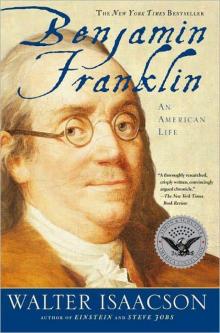 Benjamin Franklin: An American Life
Benjamin Franklin: An American Life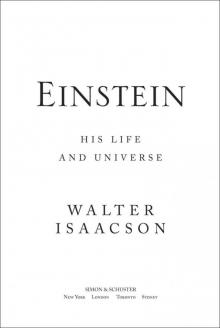 Einstein: His Life and Universe
Einstein: His Life and Universe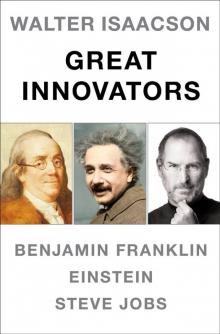 Walter Isaacson Great Innovators e-book boxed set
Walter Isaacson Great Innovators e-book boxed set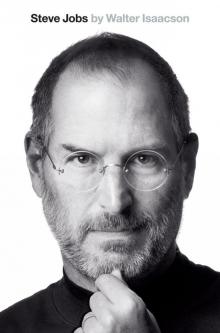 Steve Jobs
Steve Jobs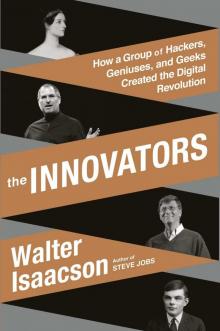 The Innovators
The Innovators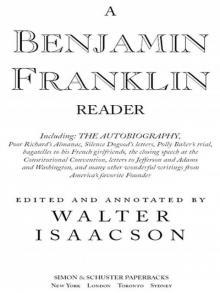 A Benjamin Franklin Reader
A Benjamin Franklin Reader